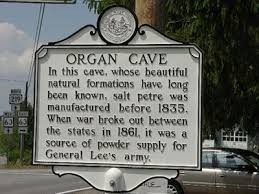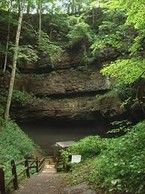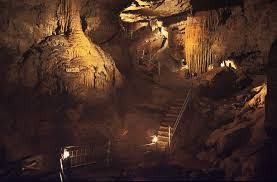Organ Cave and Museum
Introduction
Text-to-speech Audio
Images
Landmark

The beautiful view from the front.

Inside View

Backstory and Context
Text-to-speech Audio
Organ Cave is located in Southeastern West Virginia. The cave offers an assortment of wonder, science and history. Organ Cave is not only a National Natural Landmark but it is also a National Landmark of Historical Places and on the Civil War Trials. The cave offers fossil hunts and has over 45 miles of mapped passageways. There still remains over 200 leads in Organ Cave that have not been mapped and surveyed yet. It is possible these leads could go on for miles and miles. The History Channel visited Organ Cave in 2008. During their visit they found over 70 miles of passageways. Located in the heart of Greenbrier County, West Virginia, Organ Cave is the second longest commercial cave located on the east coast of the United States.
Explorers and scholars have discovered important fossil remains in the cave such as those left by giant ground sloths, sabre tooth cats, reindeer, and more. Confederate soldiers utilized the cave during the Civil War, using saltpeter found here for the manufacture of gunpowder, as well as a place of shelter during the winter months between 1861 and 1863. The cave has the nation’s largest amount of Civil War-era nitre hoppers. There are 37 of the 52 hoppers still standing with the original dirt still inside. The walls also include markings left behind from the soldiers which include plans and a discussion of their experience. Confederate troops also used the cave as a meeting place for church services.
During the American Civil War, Organ Cave played a significant role due to its production of saltpeter, a very valuable mineral sought out by both Union and Confederate soldiers during the war. Saltpeter is a mineral used to produce gunpowder. This saltpeter lines the walls and floors of Organ Cave, thus, making it a popular destination for soldiers during the time of war. The Confederate soldiers under General Robert E. Lee, were the first to figure out the cave’s importance and used it as their source of saltpeter while also using the cave as a refinement facility, turning saltpeter into a more suitable substance for the powder mills of Augusta, Georgia.
Today, visitors can tour the cave and learn all about its rich history. Old equipment left behind by the Confederate army remains in the cave and can be viewed by the public as well as part of the cave that the soldiers used for church services known as the “Chapel Room”. The “Chapel Room” housed around 1,100 Confederates. In addition to its rich history, the cave also offers a breathtaking and mysterious atmosphere that intrigues its visitors. Organ Cave is a great piece of living history that should be taken advantage of and explored by everyone
Sources
Humphries, Blanche. History of Organ Cave Community. Morgantown, WV. Argicultural Extension Division, 1928.
History. Organ Cave, WV National Historic and Natural Landmark. Accessed July 21, 2017. http://www.organcave.com/history/.
